A song over 300 years old could be the origin of the wildflower name; black-eyed Susan.
The popular song came from England in 1720, and it was about a woman (Black-eyed Susan) searching a ship’s crew for her lost love William.
While the song may have been sad, these flowers are incredibly cheerful! As long as you provide a sunny environment, these easy-to-care-for flowers can thrive. They’ll even bloom for up to three years before you need to replace them.
What other low-maintenance perennial flowers should you know about? Read on to find out.
1. Shasta Daisy

Shasta daisies feature robust, leathery foliage that is greenish in tone.
©iStock.com/ChristySturm
The shasta daisy fuses the oxeye daisy with various other wild daisies. There are single and double-petal kinds, with the plant’s size depending on the cultivar, but they all have bright white flowers with yellow centers. These plants feature robust, leathery foliage that is greenish in tone. The foliage of these plants is thick and leathery and has a deep green color. In areas where temperatures reach 80 degrees Fahrenheit or higher, the foliage is evergreen and will remain year-round.
2. Daylily
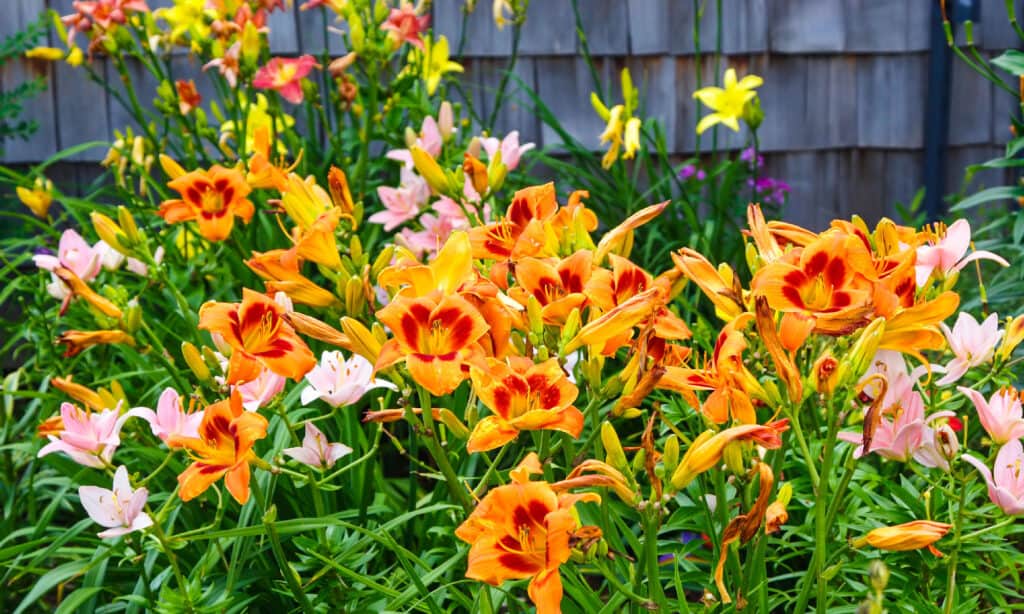
Daylilies come in various colors, including yellow, orange, pink, red, and purple.
©iStock.com/onepony
The daylily, Hemerocallis, is a perennial in the true lily family. The plant’s bloom time depends on the cultivar, with some types blooming in early spring and others not until summer. Daylilies come in various colors too, including yellow, orange, pink, red, and purple. Some cultivars even feature bi-colored or multi-colored blooms. The daylily’s foliage is long and strap-like, with a deep green color. These plants are very drought-tolerant and can even tolerate salt spray from the ocean.
3. Peony
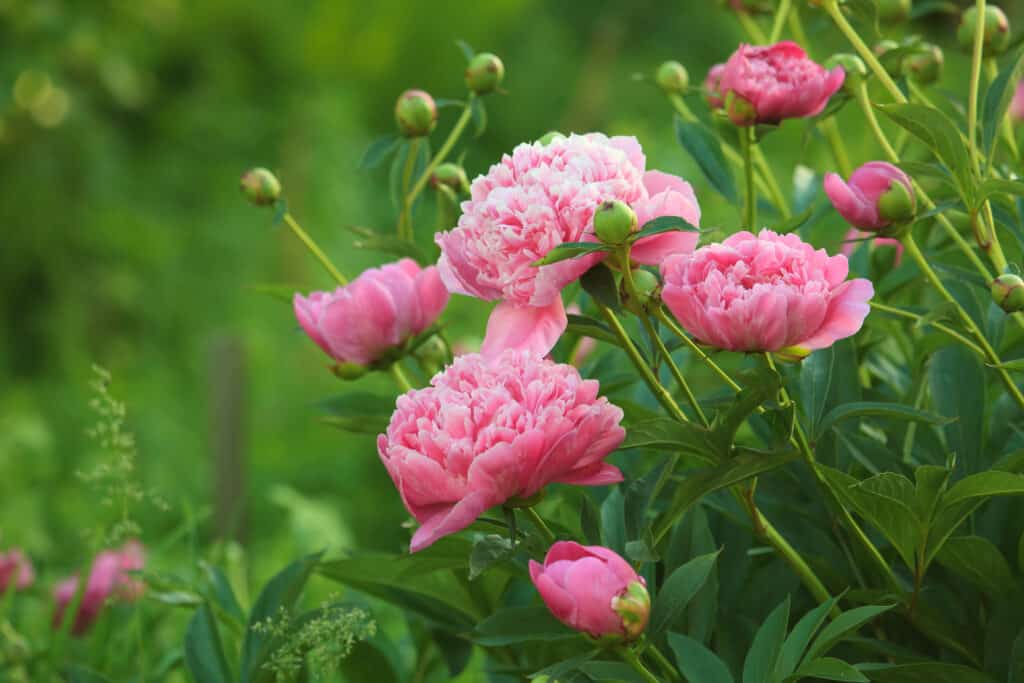
There are dozens of different peony species.
©iStock.com/Birute
The peony, Paeonia officinalis, is a flowering plant native to Asia, Europe, and Western North America. It is a herbaceous perennial, or woody shrub, that blooms in late spring or early summer. Peonies come in many colors, including white, pink, rose, red, deep purple, and coral. They are variations of the same species, but there are also many different cultivars available.
Peonies are hardy in zones 3-9 and prefer full sun and well-draining soil. They are moderately drought tolerant once established. These flowers require little pruning, but you’ll want to deadhead spent flowers to encourage continued blooming. Finally, peonies are mildly toxic to humans if ingested but can be dangerous to pets if consumed in large amounts.
4. Purple Coneflower
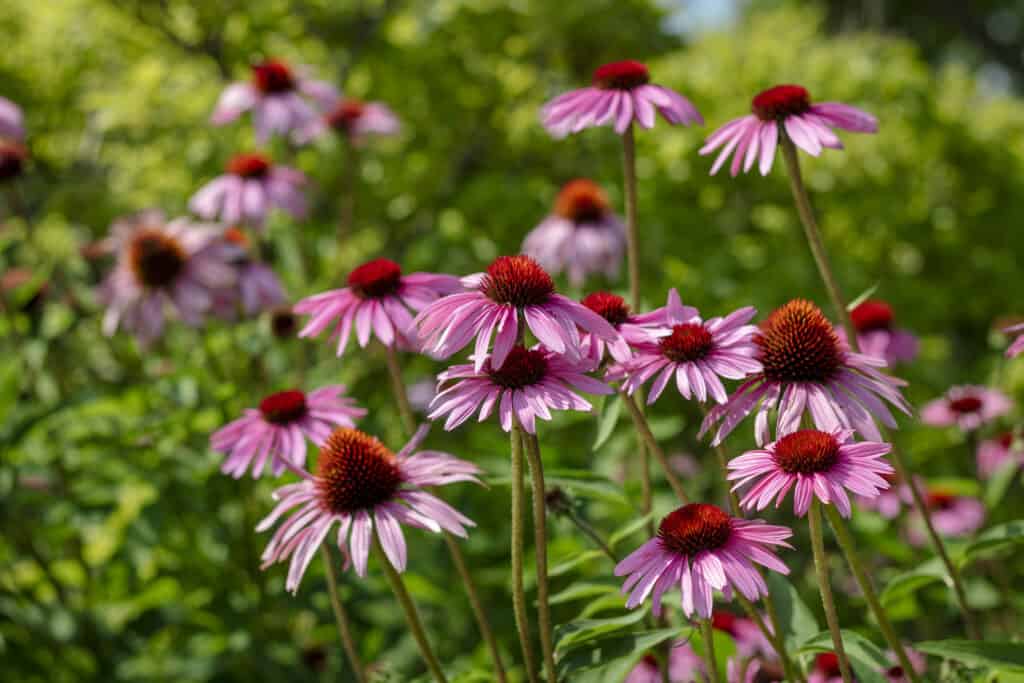
Purple coneflowers prefer full sun but will tolerate some shade.
©iStock.com/Air Footy
The purple coneflower (Echinacea purpurea) is a colorful addition to any summer garden. Native to North America, this herbaceous perennial typically blooms from June to August. The flowers are borne atop 2- to 5-foot-tall stems and range in color from pale pink to deep purple. Purple coneflowers prefer full sun but will tolerate some shade. They are adaptable to various soils as long as the drainage is good. Once established, purple coneflowers are drought tolerant and require little care. These hardy plants are also resistant to deer and rabbits.
5. Hosta

Hostas are a genus of herbaceous, perennial plants native to Asia.
©Flower_Garden/Shutterstock.com
Hostas are a genus of herbaceous, perennial plants native to Asia. The plants are popular for their large, furry leaves and their ability to thrive in shady areas. If you like variety, you’ll enjoy these easy-to-care-for perennials. Hostas come in various sizes, from small 6-inch varieties to massive 48-inch varieties. The plants also come in various colors, including green, yellow, and white.
In the wild, hostas typically bloom in the summer, producing clusters of white, purple, or pink flowers. The plants are relatively easy to care for and can be grown in USDA hardiness zones 3-9. Hostas are a popular choice for gardeners looking to add interest to their shady areas.
6. Bearded Iris
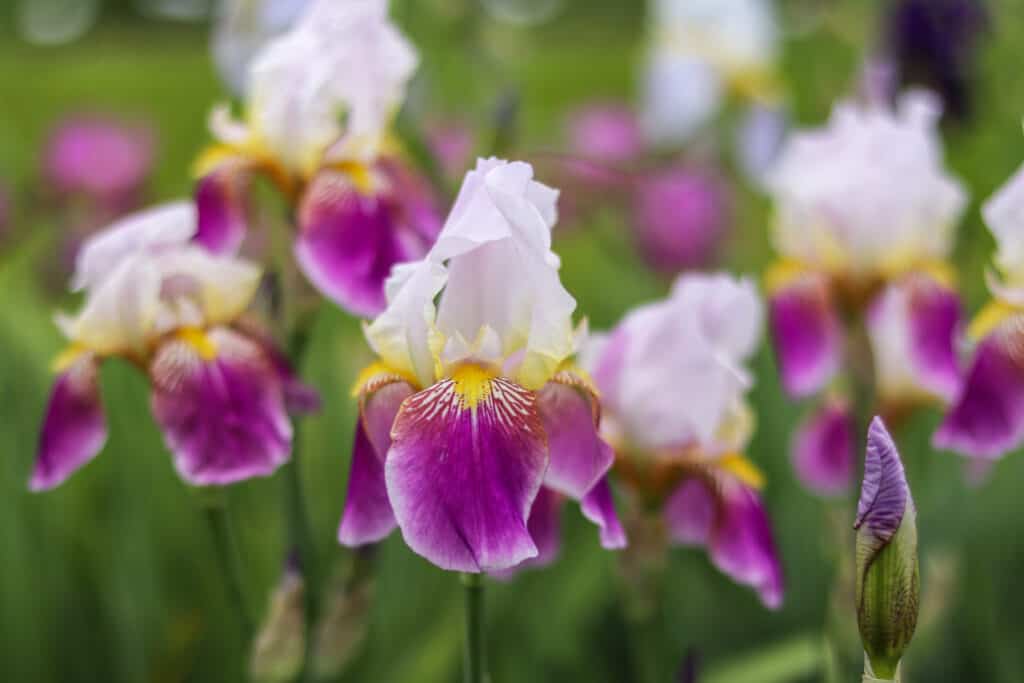
Bearded iris flowers have large, eye-catching blooms.
©iStock.com/Rabbitti
The bearded iris is a stunning flower in a wide range of colors. It is a perennial plant that blooms in the spring and grows to be 12-40 inches tall and one to two feet wide. The iris is native to southern Europe and the Mediterranean and is hardy in zones 3-9. The plant prefers full sun and average, well-draining soil.
Bearded irises are toxic to dogs and cats, so if you have pets, choose a different flower. Dog-friendly alternatives include dill, snapdragon, and orchids.
Bearded iris flowers have large, eye-catching blooms. Once they’re planted, they don’t need much attention. When it comes to water needs, they’re drought-tolerant and only need water when the soil is dry. Bearded iris flowers are also resistant to most pests and diseases. They can thrive in both sun and shade, but they prefer sunny locations.
To care for bearded iris flowers once they’re planted, water them when the soil is dry, and fertilize them once a year. They don’t need much attention, but regular watering and fertilization will help them thrive. Enjoy their beautiful blooms all spring long!
7. Purple Mountain Saxifrage
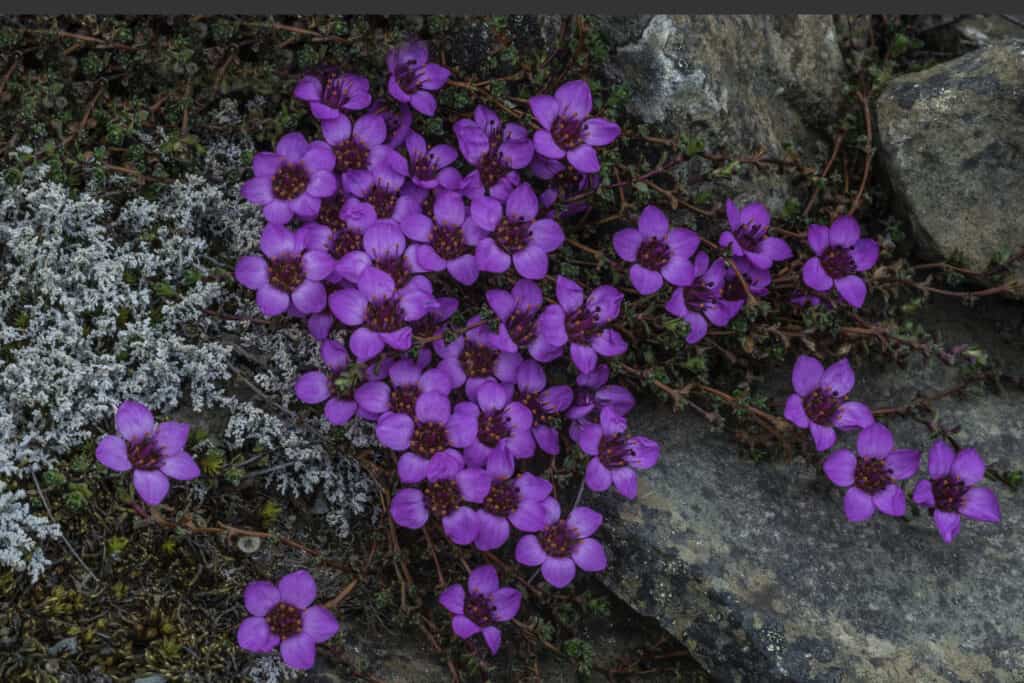
The purple mountain saxifrage is a spreading or dense-haired perennial plant.
©iStock.com/Gerald Corsi
Sometimes low, maintenance perennials can survive arctic conditions like the purple mountain saxifrage, or Saxifraga oppositifolia. It’s one of the first spring blooms, continuing to bloom throughout the summer in areas where the snow melts later. You can find these hardy, low-maintenance perennial flowers throughout the high Arctic and further south. This includes northern Britain, the Alps, and the Rocky Mountains.
The purple mountain saxifrage is a spreading or dense-haired perennial plant that grows up to five cm tall and has woody branches with creeping or trailing habits close to the surface. The leaves are tiny, rounded, and scale-like and alternate in four rows with cilia on the margins.
The vibrant flowers originate from a white to pinkish-tinged tip. The blooms are solitary, perch on short stalks, and are lilac or purple. They are significantly longer than the calyx lobes. Calyx-lobes is a term that refers to the “lobes” of the floral inferior, which are fused to the ovary, concealing the lower portion of the sepals.
8. Clematis

President clematis is a long beautiful flowering vine perfect for adding elegance to any garden.
©iStock.com/susandaniels
Clematis is the queen of vines! They’re also one of the best low-maintenance perennial flowers, with plenty of species to choose from. Take, for instance, president clematis. It’s a long beautiful flowering vine perfect for adding elegance to any garden. This plant is known for its violet-blue flowers, which appear in late spring and early summer. President clematis is a native of North America, Central America, Europe, and Asia, and it is hardy in zones 4-8. This perennial plant prefers full to partial sun and well-drained soil, and it can grow quite tall. An 11-foot clematis isn’t unheard of. Be careful, though. President clematis is toxic to humans and pets, so care should be taken when growing this plant.
Up Next:
The photo featured at the top of this post is © Fusionstudio/Shutterstock.com
Sources
- , Available here: https://flnps.org/plants/naturalized-garden-interest
- , Available here: https://www.fairfaxcounty.gov/parks/sites/parks/files/assets/documents/nature-history/greenspring/infosheets/annuals.pdf
- , Available here: https://sfyl.ifas.ufl.edu/sarasota-docs/hortres/GrowtoLearnSchoolGardeningGuide.pdf
- , Available here: https://hortnews.extension.iastate.edu/2004/5-21-2004/perennials.html
Thank you for reading! Have some feedback for us? Contact the AZ Animals editorial team.






